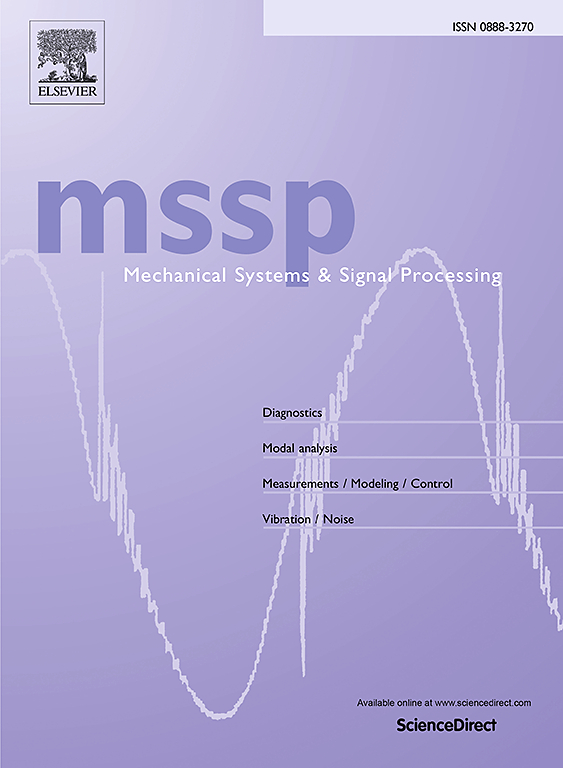Active aliasing ESPRIT: A robust parameter estimation method for low-intervention Blade tip timing measurement
IF 7.9
1区 工程技术
Q1 ENGINEERING, MECHANICAL
引用次数: 0
Abstract
Rotating blades are critical but fragile components in aeroengine. Damage to rotating blades will sharply reduce the working efficiency and even endanger operational safety. Thus, it is significant to monitor the blades. Blade tip timing (BTT) is an emerging vibration measurement technique for rotating blades and is considered a promising approach for blade condition monitoring owing to its non-contact property and long service life. The key to BTT application is extracting vibration parameters from the measured signals that reflect the blade health condition. However, BTT signals are inherently undersampled and hard to analyze by traditional methods. Most existing BTT analysis methods require multiple probes, typically 47 probes. Due to weight, safety, installation, and maintenance costs, it is desired to implement BTT measurement and extract vibration parameters with as few probes as possible. In this paper, we propose a low-intervention BTT measurement-based signal post-processing technique, termed AA-ESPRIT, which is a practical variant of classic ESPRIT. Remarkably, AA-ESPRIT overcomes the limitations of ESPRIT in BTT application and significantly improves the estimation accuracy by actively utilizing aliasing instead of hastily suppressing aliasing. Both numerical and experimental results show the effectiveness of AA-ESPRIT in the presence of measurement noise and speed fluctuation. In addition to satisfactory estimation performance, AA-ESPRIT can work with only two probes and lead to a low usage cost; thus, it is expected to have its place in the BTT field.
求助全文
约1分钟内获得全文
求助全文
来源期刊

Mechanical Systems and Signal Processing
工程技术-工程:机械
CiteScore
14.80
自引率
13.10%
发文量
1183
审稿时长
5.4 months
期刊介绍:
Journal Name: Mechanical Systems and Signal Processing (MSSP)
Interdisciplinary Focus:
Mechanical, Aerospace, and Civil Engineering
Purpose:Reporting scientific advancements of the highest quality
Arising from new techniques in sensing, instrumentation, signal processing, modelling, and control of dynamic systems
 求助内容:
求助内容: 应助结果提醒方式:
应助结果提醒方式:


